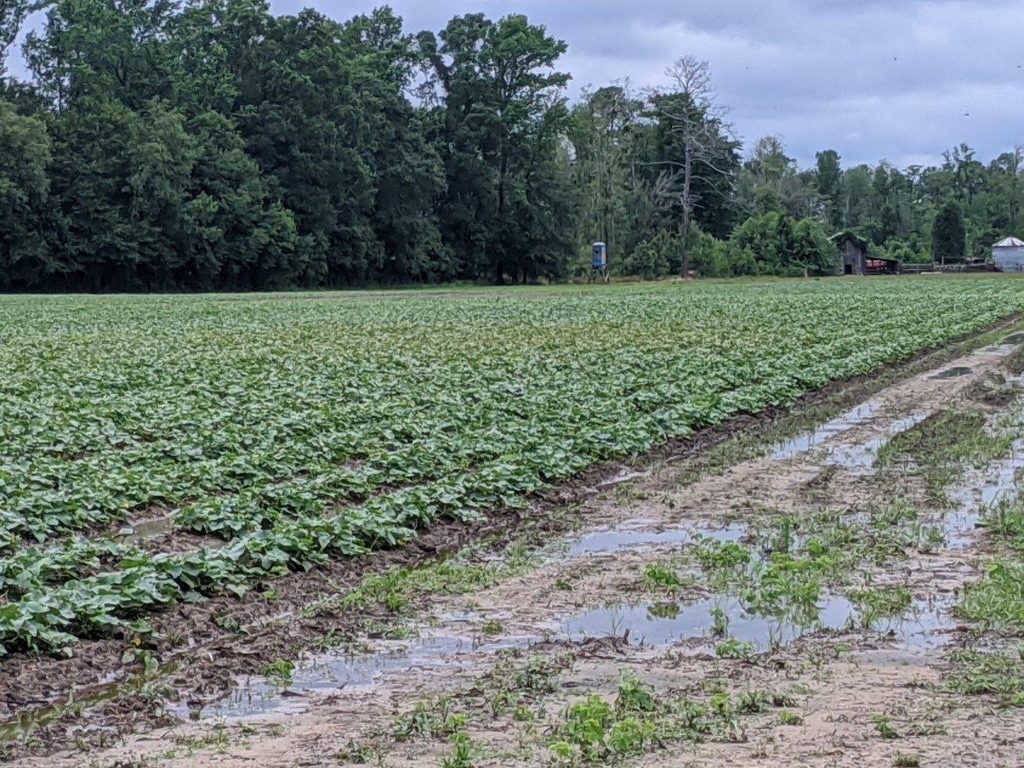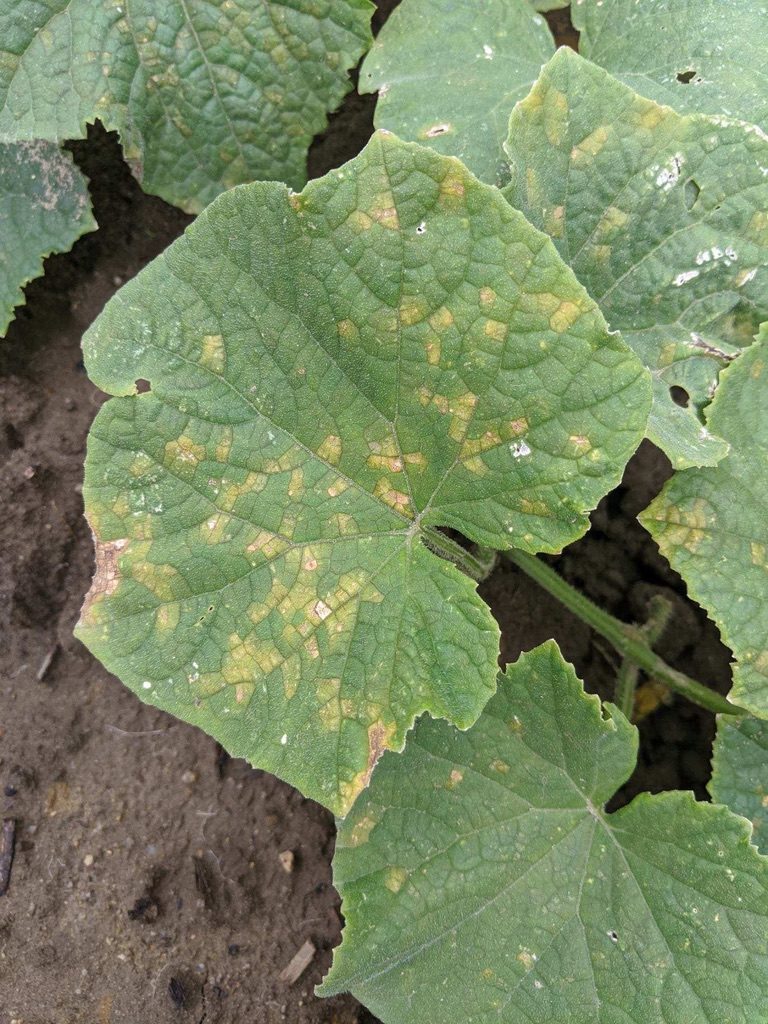Cucumber Downy Mildew Found in Johnston County
go.ncsu.edu/readext?702154
en Español / em Português
El inglés es el idioma de control de esta página. En la medida en que haya algún conflicto entre la traducción al inglés y la traducción, el inglés prevalece.
Al hacer clic en el enlace de traducción se activa un servicio de traducción gratuito para convertir la página al español. Al igual que con cualquier traducción por Internet, la conversión no es sensible al contexto y puede que no traduzca el texto en su significado original. NC State Extension no garantiza la exactitud del texto traducido. Por favor, tenga en cuenta que algunas aplicaciones y/o servicios pueden no funcionar como se espera cuando se traducen.
Português
Inglês é o idioma de controle desta página. Na medida que haja algum conflito entre o texto original em Inglês e a tradução, o Inglês prevalece.
Ao clicar no link de tradução, um serviço gratuito de tradução será ativado para converter a página para o Português. Como em qualquer tradução pela internet, a conversão não é sensivel ao contexto e pode não ocorrer a tradução para o significado orginal. O serviço de Extensão da Carolina do Norte (NC State Extension) não garante a exatidão do texto traduzido. Por favor, observe que algumas funções ou serviços podem não funcionar como esperado após a tradução.
English
English is the controlling language of this page. To the extent there is any conflict between the English text and the translation, English controls.
Clicking on the translation link activates a free translation service to convert the page to Spanish. As with any Internet translation, the conversion is not context-sensitive and may not translate the text to its original meaning. NC State Extension does not guarantee the accuracy of the translated text. Please note that some applications and/or services may not function as expected when translated.
Collapse ▲Written by Lina Quesada-Ocampo and Brandon Parker
Cucumber downy mildew, caused by the oomycete pathogen Pseudoperonospora cubensis, has been found in a commercial cucumber field in Johnston County. The first report in North Carolina was made on June 8 of 2020 on a related post with management information.

Figure 1. Cucumber field infected with downy mildew, note bronzed areas in the field due to foliar discoloration (Brandon Parker, NC State Extension).
Approximately 25% of the field was infected at 40% disease severity. The recent rains in the state create favorable conditions for the pathogen and we expect more fields to become infected as the weather continues to be wet and cool. It is important that all cucurbit growers actively scout their fields for downy mildew and contact their local extension agent if they need help with diagnostics via the Plant Disease and Insect Clinic, management options listed in our disease factsheet, and reporting to the Cucurbit Downy Mildew ipmPIPE.

Figure 2. Angular, yellow lesions on topside of the leaves that are bound by leaf veins (Brandon Parker, NC State Extension).
Now that cucumber downy mildew has been reported in the state, cucumber and cantaloupe growers should be applying fungicides effective for P. cubensis clade 2 isolates that can be found in our disease factsheet.
Squash, watermelon, and pumpkin growers can initiate preventive sprays for P. cubensis clade 1 isolates as described in our disease factsheet, however, cucurbit downy mildew caused by clade 1 isolates has not been yet reported in North Carolina.


